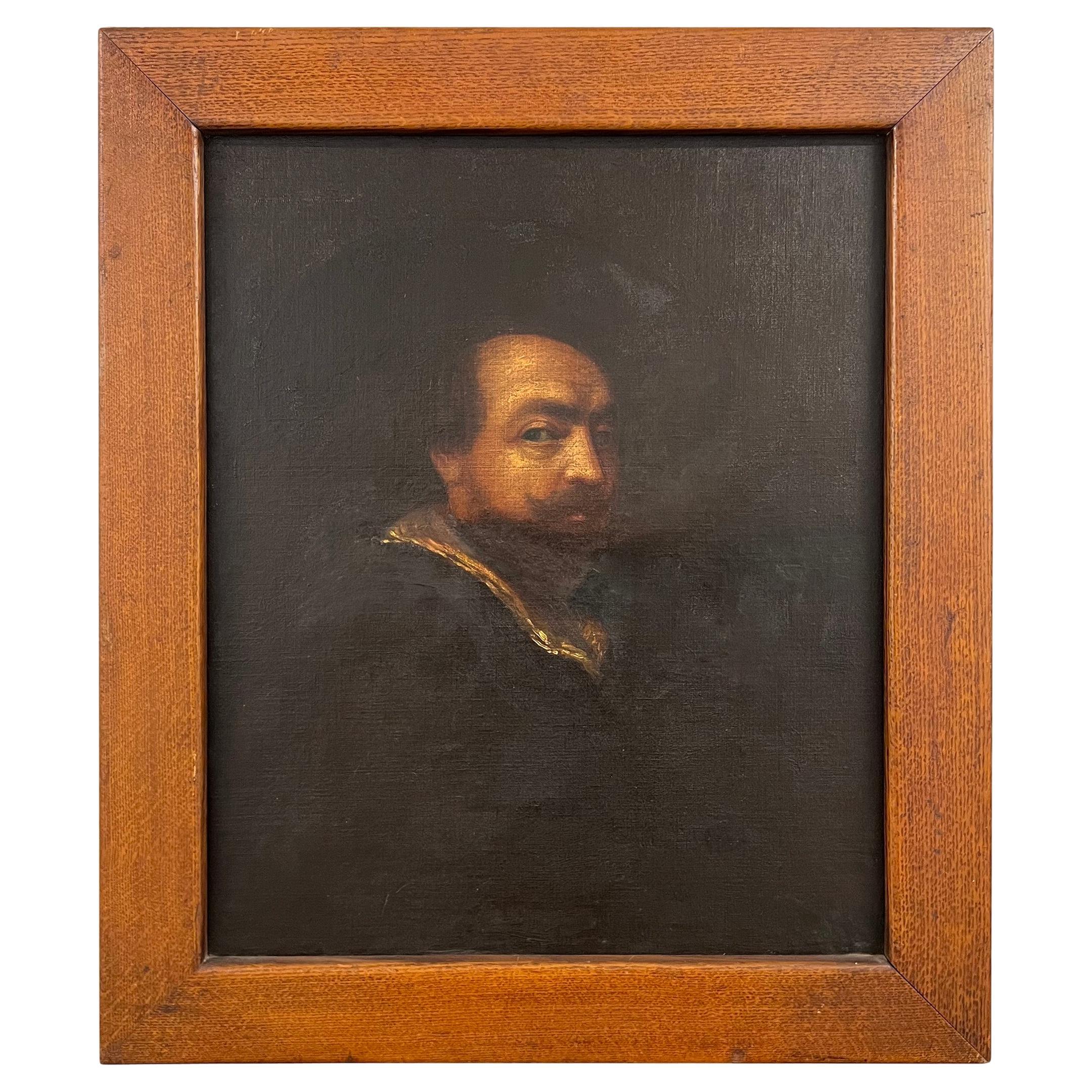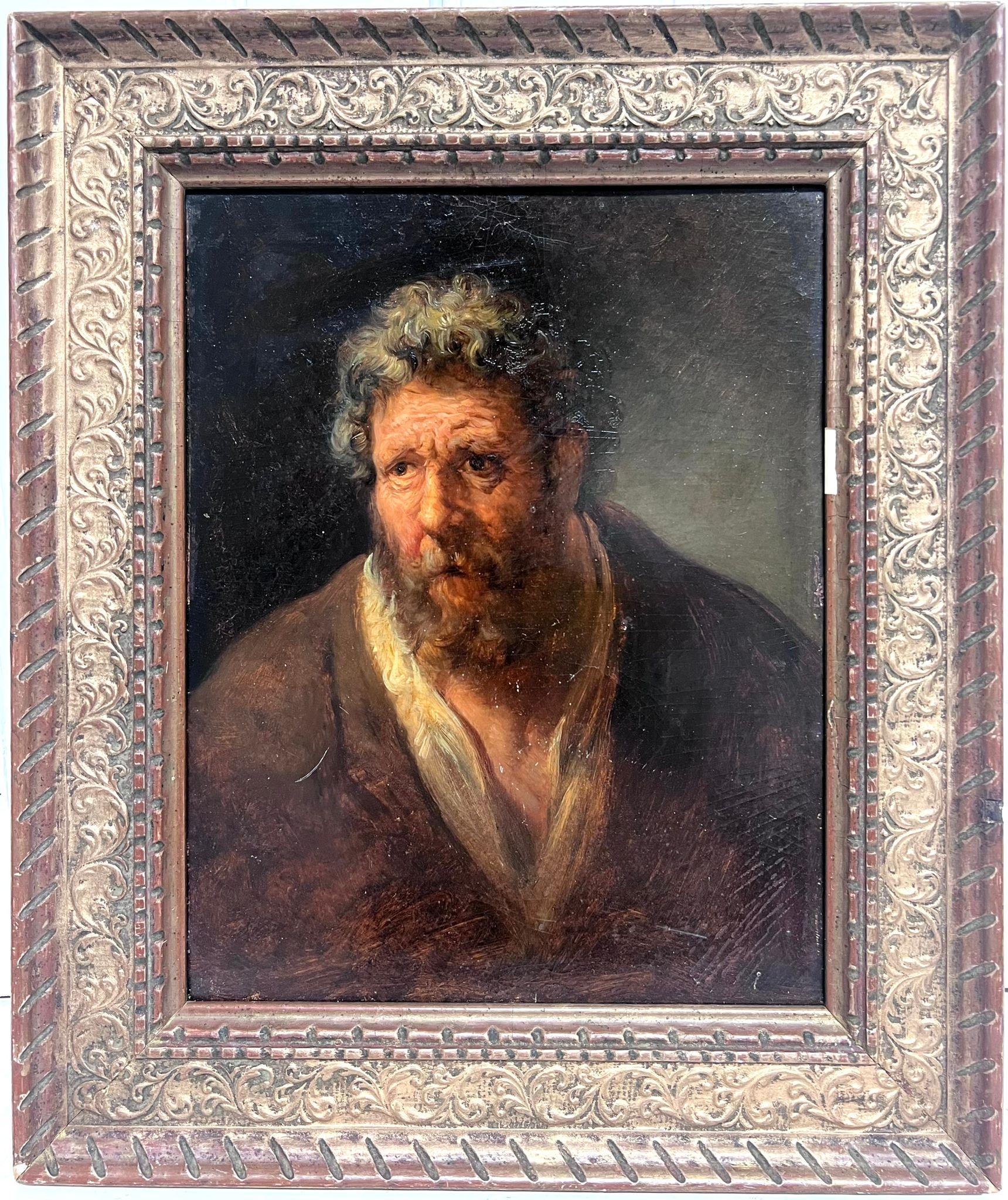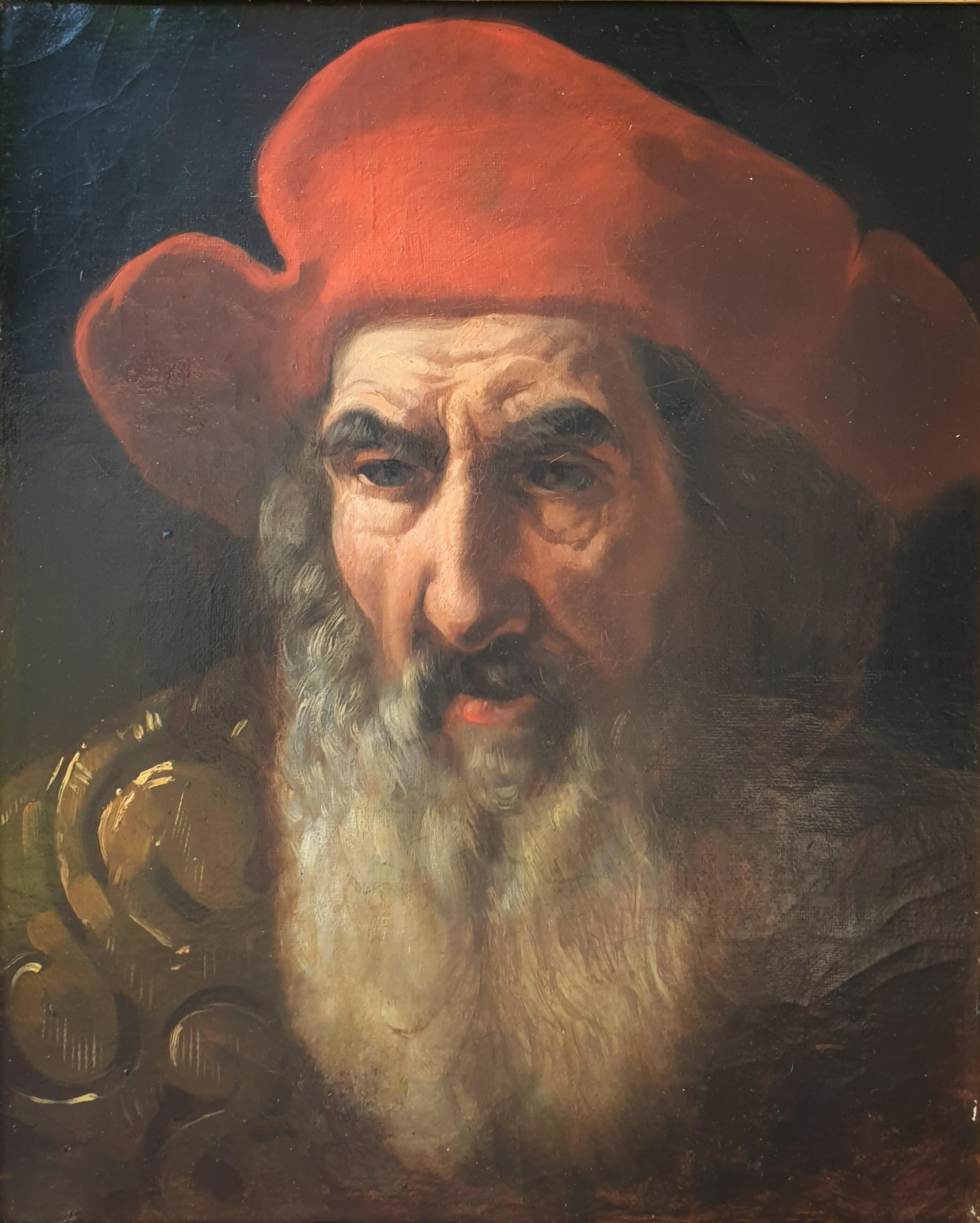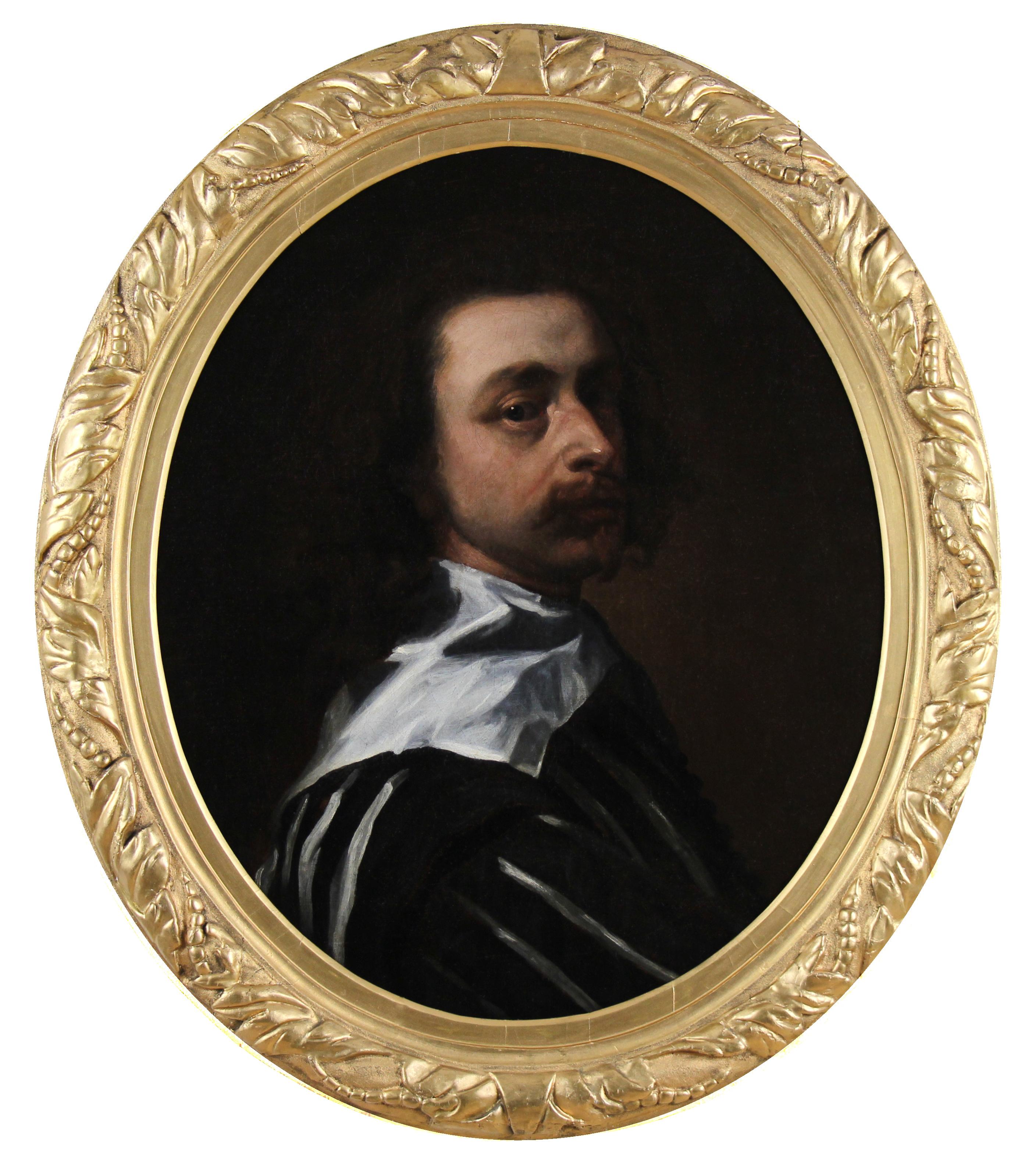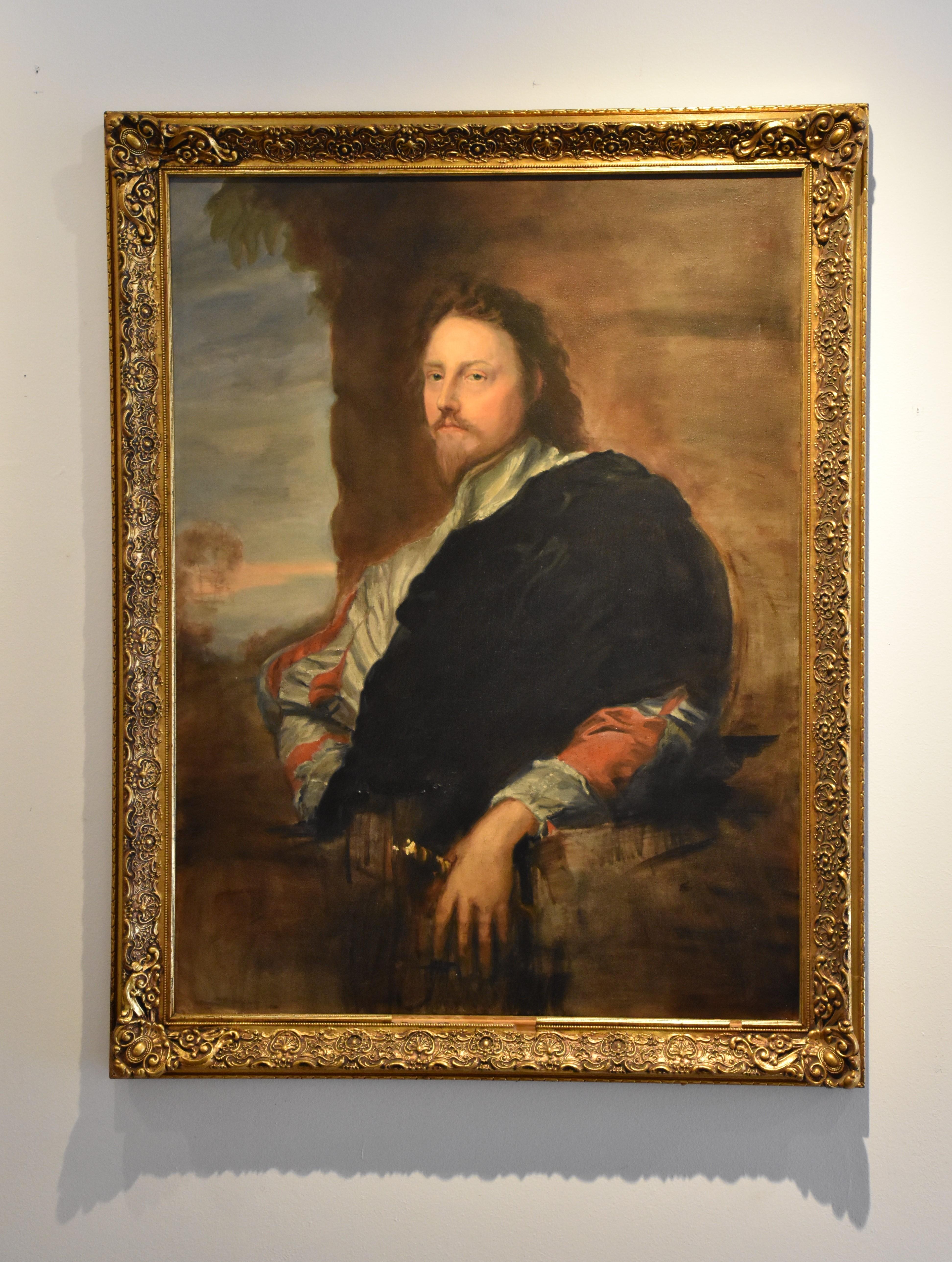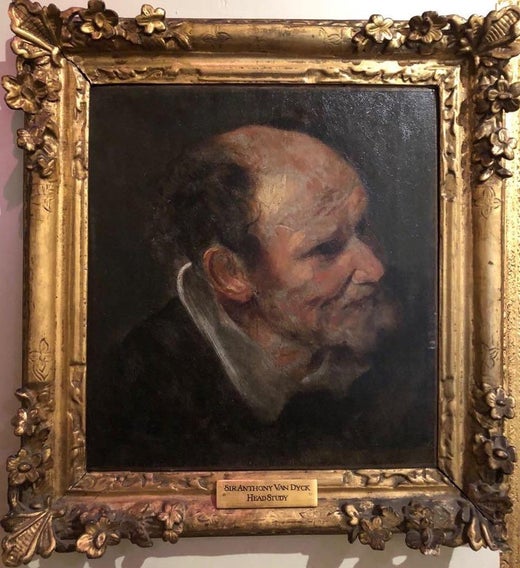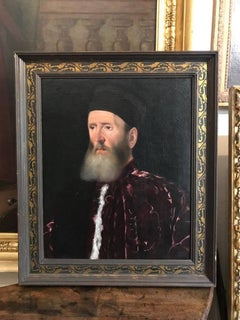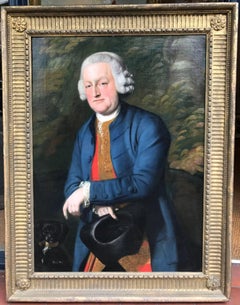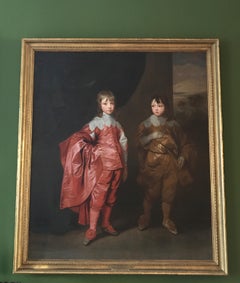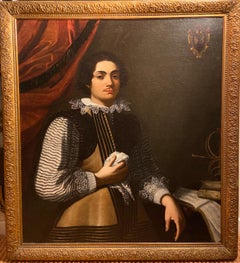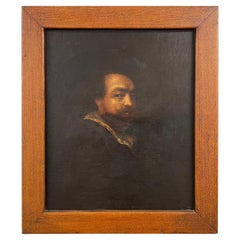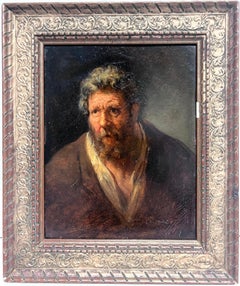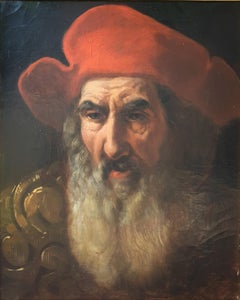Items Similar to Sir Anthony Van Dyck 17th Century Oil Painting Study of a Head of a Man
Want more images or videos?
Request additional images or videos from the seller
1 of 10
Anthony van DyckSir Anthony Van Dyck 17th Century Oil Painting Study of a Head of a Man1630
1630
$102,219.16
£75,000
€87,941.90
CA$141,020.22
A$156,820.34
CHF 82,365.44
MX$1,917,286.01
NOK 1,026,352.31
SEK 967,573.02
DKK 656,330.81
About the Item
Sir Anthony Van Dyck (1599-1641, Flemish)
Study of a Head of Man
Circa 1627-32, Van Dyck’s second Antwerp period
Oil on paper, laid down on canvas
Dimensions 15 x 14 inches (38.1 x 35.6 cm)
Provenance:
Christie’s New York, 29 January 2015, Old Master Paintings & Sculpture Part II, Lot 00204
Dr Christopher Brown has also not excluded an attribution to the master himself on the basis of a photograph of the work when at Christie's.
Dr Hans Vlieghe attributes this painting to the studio of Sir Anthony Van Dyck after first-hand inspection and dates it to Van Dyck’s second period (1627-1632).
- Creator:Anthony van Dyck (1599 - 1641, Flemish)
- Creation Year:1630
- Dimensions:Height: 15 in (38.1 cm)Width: 14 in (35.56 cm)
- Medium:
- Movement & Style:
- Period:
- Condition:
- Gallery Location:London, GB
- Reference Number:1stDibs: LU67337878822
Anthony van Dyck
A three-quarter length portrait of Anne, Lady Russell, later Countess of, Attributed to Sir Anthony Van Dyck. Anne Carr, Lady Russell, an esteemed beauty was clearly a favourite of Sir Anthony Van Dyck. There are six portrait types of Lady Russell listed in Miller, et al. It is tempting to associate the current portrait with the three-quarter length in blue in the Egremont collection at Petworth House (Millar IV.22) because of the similarity of colouring. However, we believe that this picture represents a different portrait type, and most likely derives from a separate sitting. The comparison with the short three-quarter length belonging to the Tokyo Fuji Art Museum, Tokyo (Millar IV.23), is telling. The heads are essentially the same, though the pose and the colouring of the portraits are quite different. The Japanese painting features a rose-red gown and a fawn stole, possibly darker than in this painting. This comparison also illustrates Van Dyck's ability to develop different compositions from a single sitting. Dr. Malcolm Rogers CBE FSA believes this painting to be an unfinished work by the artist: "with, as you might expect, preparatory work by a member of his studio. Especially encouraging is the penumbra of thicker paint around the lady's head which is a recognised feature associated with the artist's ad vivum rendering of heads. My notes do not mention a similar penumbra in the Tokyo painting, though the painting is throughout of very high quality. There are one or two slight pentimenti in the silhouette of the figure of your painting and in the line of her stole, which at one point may have been intended to run over her right wrist. Close examination may reveal more. Some areas of the draperies, especially the linens are not fully realised, and, of course, the background is only roughed in. Millar suggests that the Tokyo painting with its loose gown and protective hands may indicate that the sitter is pregnant. The gown is similarly loose in [this] painting. If she is indeed pregnant this might suggest a date around 1638 or 1639, in which years the first two of her eleven children were born. I cannot explain why the painting was left unfinished, but it is, must be, a distinct possibility that this is the very portrait of Lady Bedford that remained in Van Dyck's studio at the time of his death (see C. Brown and N. Ramsay, 'Van Dyck's Collection: Some New Documents', Burlington Magazine, Vol. 132, pp. 704-9)." Dimensions: 53 1⁄8 in (H) x 43 1⁄4 in (W) Provenance: Picture probably listed in contents of van Dyck’s studio at time of death December 1641 (O. Millar, Van Dyck, A complete catalogue of the paintings, New Haven and London, 2004, under no. IV.23);
The most Reverand Dean of Durham, possibly William Lake (1817-1897);
Charles Sedelmeyer, 1906, as 'Sir Anthony van Dyck';
Colonel Edward F Simms of Kentucky;
H. Kenneth Franzheim;
Kenneth Franzheim II;
Thence by descent to Sabrina Franzheim (current owner).
About the Seller
5.0
Vetted Professional Seller
Every seller passes strict standards for authenticity and reliability
Established in 1990
1stDibs seller since 2017
42 sales on 1stDibs
Typical response time: A week
- ShippingRetrieving quote...Shipping from: London, United Kingdom
- Return Policy
Authenticity Guarantee
In the unlikely event there’s an issue with an item’s authenticity, contact us within 1 year for a full refund. DetailsMoney-Back Guarantee
If your item is not as described, is damaged in transit, or does not arrive, contact us within 7 days for a full refund. Details24-Hour Cancellation
You have a 24-hour grace period in which to reconsider your purchase, with no questions asked.Vetted Professional Sellers
Our world-class sellers must adhere to strict standards for service and quality, maintaining the integrity of our listings.Price-Match Guarantee
If you find that a seller listed the same item for a lower price elsewhere, we’ll match it.Trusted Global Delivery
Our best-in-class carrier network provides specialized shipping options worldwide, including custom delivery.More From This Seller
View All16th Century Italian Renaissance Old Master Portrait of a Procuratore
By Jacopo Bassano
Located in London, GB
Jacopo BASSANO (c. 1510-1592, Italian)
Portrait of a Procuratore
Oil on canvas
30 ¼ x 26 inches (including frame)
Provenance: Lucien Bonaparte’s Collection (as Portrait of Doge Priuli, Tiziano); Rich-mond, Virginia Museum, Portrait of Doge Lorenzo Priuli.
The painting is a portrait of a man half-length, on a black background. It is a three-quarter portrait, according to a custom very common in the genre of portraiture in sixteenth century. The man is wearing a decorated...
Category
16th Century Old Masters Portrait Paintings
Materials
Oil
$239,874 Sale Price
20% Off
Free Shipping
18th Century Oil Painting Portrait of Phillip, 6th Viscount Wenman.
By Nathaniel Dance-Holland
Located in London, GB
Sir Nathaniel Dance-Holland (1750-1811) was an English portrait painter and one of the founding members of the Royal Academy in 1768. Justly celebrated in his lifetime he won several...
Category
Late 18th Century Old Masters Portrait Paintings
Materials
Oil
Double Portrait Oil Painting Brothers George, 2nd Duke Buckingham & Lord Francis
By (After) Anthony Van Dyck
Located in London, GB
Aftrer Anthony VAN DYCK - maybe Studio (1599, Antwerp – 1641, London) Flemish
Double Portrait of George Villiers, 2nd Duke of Buckingham (1628-1687) & Lord Francis Villiers (1629-1648)
Oil on Canvas
170 x 147 cm
Anthony Van Dyck (1599-1641)
No painter has done more to define an era than Anthony van Dyck. He spent only seven and a half years of his short life (1599- 1641) in England. He grew up in Antwerp, where his precocious talent was recognised by Peter Paul Rubens, the greatest painter of his age. He worked in Rubens’s studio and imitated his style as a religious artist, painting biblical scenes redolent of the lush piety of the counter-reformation. But soon he was on the move. In 1620, he visited London for a few months, long enough to paint a history picture, The Continence of Scipio, for the royal favourite, George Villiers, Marquess of Buckingham, and a portrait of his other English patron, the great art collector, Thomas Howard, 2nd Earl of Arundel.
After a stint in Italy, making imposing portraits of the wealthy aristocracy and sketching and copying works by Titian, he returned to the Spanish Netherlands in 1627, becoming court artist to Archduchess Isabella before departing for The Hague in 1631 to paint the Dutch ruler Frederick Henry, Prince of Orange. Charles I’s invitation in 1632 led Van Dyck back to London where he was knighted, paid an annual salary of £200 and installed in a house in Blackfriars with a special jetty at which the royal barge might tie up when the King was visiting his studio. By this time Van Dyck was recognised as the leading court painter in Europe, with Velazquez at the court of Philip IV of Spain his only rival. He also excelled as a superbly observant painter of children and dogs.
Van Dyck’s notoriety in depicting children led to the introduction of groups of children without their parents as a new genre into English painting (amongst other new genres).
For the next 300 years, Van Dyck was the major influence on English portraiture. Nearly all the great 18th Century portraitists, from Pompeo Batoni and Allan Ramsay to Thomas Gainsborough and Joshua Reynolds, copied Van Dyck’s costumes, poses and compositions.
George Duke of Buckingham & his brother Francis Villiers
Painted in 1635, this double portrait was originally commissioned by Charles I, who raised the two brothers after their father, George Villiers, was assassinated in 1628. Together with their sister, Lady Mary Villiers, they enjoyed the King’s favour absolutely. Francis whose absolute ‘inimitable handsomeness’ was noted by Marvell (who was killed in a skirmish near Kingston upon Thames). The young duke who commanded a regiment of horse at the Battle of Worcester, remained closely associated with Charles II, held a number of high offices after the Restoration and was one of the most cynical and brilliant members of the King’s entourage, immortalised as ‘Zimri’ in Dryden’s Absalom and Achitopbel. As a young man he had sold his father’s great collection of pictures in the Spanish Netherlands, many of them to the Archduke Leopold Willhelm.
Painted for Charles I and placed near the portrait of their sister in the Gallery at St James’ Palace. The handling of both costumes is very rich, and the heads are very carefully and sensitively worked. That of the younger boy in particular is more solidly built up than the lower part of the figure. A preparatory drawing for the younger boy is in the British Museum.
There are copies at, e.g., Highclere Castle...
Category
17th Century Old Masters Portrait Paintings
Materials
Oil
17th Century Italian Oil Painting Portrait of Music Prodigy Girolamo Frescobaldi
Located in London, GB
Portrait of Girolamo Frescobaldi (1583-1643)
Attributed to Antiveduto Della Grammatica (1571-1626)
Oil on Canvas
1605-1609
Framed in a Nineteenth Century gild and composite frame
44....
Category
Early 17th Century Baroque Figurative Paintings
Materials
Oil
17th Century Oil Painting Portrait of a Young English Boy
By Gerard Soest
Located in London, GB
Gerard SOEST (1600 - 1681)
Portrait of a Young Boy
oil on canvas
35.5 x 30.5 inches inc. frame
Gerard Soest (circa 1600 – 11 February 1681), also known as Gerald Soest, was a portra...
Category
17th Century Old Masters Portrait Paintings
Materials
Oil
Large Beautiful Early 17th Century Painting of St Peter
Located in London, GB
17th Century Italian School
St Peter
Oil on Canvas
55 1/2 x 41 inches
This large and tender rendering of Saint Peter was painted by the hand of great Italian painter of the 17th Cen...
Category
Early 17th Century Baroque Portrait Paintings
Materials
Oil
You May Also Like
19th Century Study of a Self Portrait by Peter Paul Rubens
Located in Chicago, IL
In this compelling 19th-century art student study, we encounter a mesmerizing self-portrait by the eminent Baroque master, Peter Paul Rubens. The painting captures Rubens adorned in ...
Category
Antique 19th Century American Baroque Paintings
Materials
Linen, Paint
Early 1800's Italian Oil Painting Portrait of Bearded Man Saint Peter Apostle
Located in Cirencester, Gloucestershire
Italian School, early 19th century
'Portrait of a Bearded Man' - possibly Saint Peter?
oil on board, framed
framed: 16 x 13.5 inches
board: 12.5 x 9.5 inches
provenance: private col...
Category
Early 19th Century Old Masters Portrait Paintings
Materials
Oil
French painting portrait Bearded italian man oil canvas Second half 18th century
Located in PARIS, FR
French school of the second half of the 18th century Oil on canvas 46 x 38 cm (57 x 49 cm with the frame) Very beautiful frame in gilded wood from the Louix XVI period with decoratio...
Category
Late 18th Century French School Portrait Paintings
Materials
Oil
$1,422 Sale Price
20% Off
Oil On Canvas Self Portrait of the artist Sir Anthony Van Dyck 18Th c
Located in Gavere, BE
"Oil On Canvas Self Portrait After Sir Anthony Van Dyck"
Follower of Sir Anthony van Dyck (Flemish painter, 1599-1641), Self portrait Oil on canvas (doubled),
Probably end 18th centu...
Category
Late 18th Century Baroque Figurative Paintings
Materials
Gold Leaf
Old man elderly oil on board painting
Located in Barcelona, Barcelona
Anonymous - Old man - Oil on board
Oil size 34x25 cm.
Frameless
Category
1920s Baroque Portrait Paintings
Materials
Canvas, Oil
$403 Sale Price
57% Off
Portrait of Nicolas Lanier after Sir Anthony Van Dyck, Figurative Texas artist
Located in Houston, TX
Portrait of Nicolas Lanier after Sir Anthony Van Dyck. Lanier was Master of the King’s Music in Charles 1 court in 1628. Artist: Joan Breckwoldt. ...
Category
2010s American Impressionist Portrait Paintings
Materials
Oil
More Ways To Browse
Sculpture Head Portrait
Flemish Sculpture
Josef Liesler
Juhel A Paris
Lajos Rezes Molnar
Lavinia Fontana
M Moshall
Mark Paul Deren
Mulberry Neely
Norah Neilson Gray
Oidentifierad Konstnar
Old Pretender
Paulus Moreelse
Peter Max Blushing Beauty
Philip Naviasky
Pieter Hermansz Verelst
Rene Gagnon
Robert Laughlin Painting
